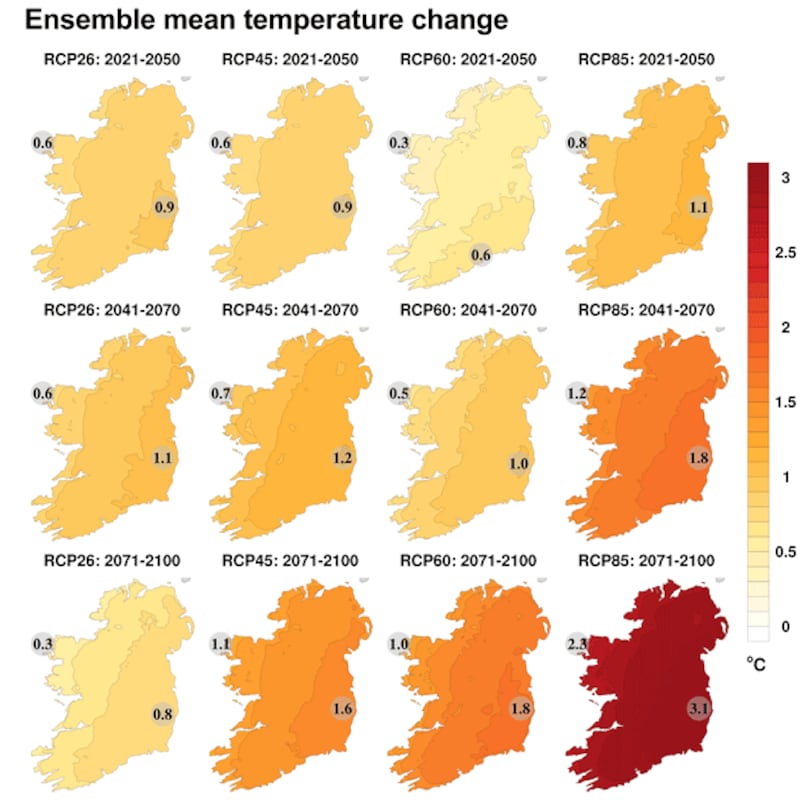Ireland’s climate is likely to change dramatically by 2050, with the eastern region worst affected by higher temperatures, according to the most detailed projections ever generated for the country.
The analysis, generated by a supercomputer, indicates Irish temperatures are set to increase by up to 1.6 degrees due to climate change compared with the 1981-2000 period.
The key Paris Agreement target is to keep the increase in global average temperature to well below 2 degrees above pre-industrial levels this century, and to pursue efforts to limit it to 1.5 degrees to avoid runaway climate change.
There will be "enhanced warming in the east" and more extreme weather events across the whole of the country by midcentury, the Irish Centre for High-End Computing predicts.
It says the growing season will be extended by 45 days a year, which has immense implications for agriculture, both from a positive and negative perspective. It will enable diversification in crop production but will also increase the threat of pests, while wetter winters will hamper farming activity, according to the team who conducted the advanced computer modelling exercise.

The report indicates “substantial decreases of approximately 50 per cent are projected in the number of frost and ice days”, and a similar reduction in snowfall. Summer heatwaves are expected to occur more frequently.
The projections provide unprecedented detail on regional climate impacts, with the south expected to become most vulnerable to heatwaves. All regions will experience more extreme rain driven by a warming world – and yet more dry spells.
Uneven spread
The analysis, which also factored in global data, was conducted using the national supercomputer at Waterford Institute of Technology known as Kay. The Irish Centre for High-End Computing is based at NUI Galway and at Grand Canal Quay in Dublin.
"The models show that the effects of climate change will not be evenly spread across Ireland; the east for example, will see higher overall temperature increases than the west," said climate scientist and project lead Dr Paul Nolan.
“The fine detail of the models results in a more accurate representation of the climate, and in particular, extreme events such as heavy rainfall, droughts and heatwaves.”
The centre’s environmental programme manager, Alastair McKinstry, added: “Ireland’s climate is changing, our models indicate this is resulting in higher temperatures, changing precipitation patterns and increases in the frequency and intensity of extreme weather events, with these changes expected to continue and intensify into the future.”
The data was sufficiently detailed to indicate how different sectors covering agriculture, health, energy, flooding, water management, biodiversity and transport are likely to be affected in different ways, he said.
The study was funded by the Environmental Protection Agency with support from Met Éireann and the Marine Institute. It will inform Government policy over coming decades across many sectors, but particularly in climate action – by way of reducing carbon emissions fuelling global heating, and scaling up adaptation measures to counter its inevitable consequences.












